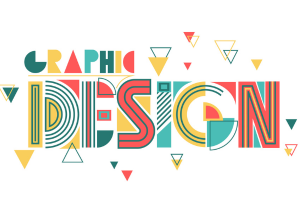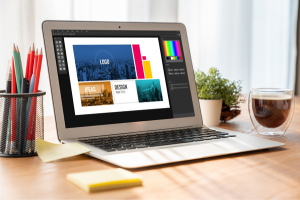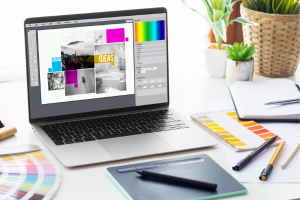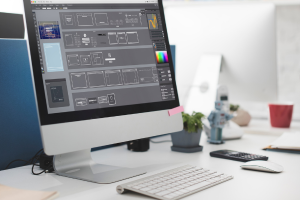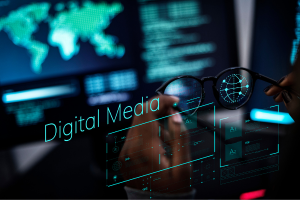At a time when attention is attracted, the options are endless, and competition is fierce, the visual identity of your brand has become more important than ever. It’s no longer about being a set of a logo or colors – it’s all about creating a complete visual language that connects parties and creators. When we enter 2025, companies should consider how they present themselves visually to stand out in a digital-first, adventure-driven world.
This article examines the main principles, strategies, and trends that can help you create a strong visual identification for your brand in 2025.

What Is Visual Identity?
Visual identification is a collection of design elements that represent and communicate your brand. It also includes:
Logo – Primary Symbol or Word mark that symbolizes your brand.
Typography – font and text style that you use continuously.
Color palette – Primary and secondary brand colors that develop emotions.
Pictures and graphics – photography, images, and iconography.
Layout and Design System – rules on how your brand is used on platforms.
Together, these elements create stability on touch points, social media, packaging, advertising, and even office locations. A strong visual identity doesn’t just look good; It tells your story, confirms credibility, and creates permanent recognition.
Why Visual Identity Matters in 2025
The importance of a clear visual identity has increased with cultural and technical changes:
Digital saturation: In the world of infinite rolling, marks with strong views through noise.
Global Competition: Companies are now competing on a platform around the world, which requires immediate recognition.
Consumer trust: Continuous visuals communicate professionalism and reliability.
General Z and General Alpha Effects: Young audiences are very visually views, which react to authenticity, creativity, and beauty devices.
AI and automation: When the design tool is more accessible, brands must go beyond the generic template and develop an identity that feels really unique.
In short, your visual identity is the first impression – and in many cases the decisive factor – between a customer who chooses you or your competitor.
Core Principles of a Strong Visual Identity
1. Stability in platforms
Your brand should look the same on Instagram, a website, a billboard, or a mobile app. The incompatibility confuses customers and weakens the brand recognition. A brand guide is required to use the logo, color, typography, and images.
2. Simplicity and clarity
More complex people or scenes often fail in digital places. Simplicity ensures versatility, adaptability, and timeless appeal. Think of brands like Apple or Nike – their views are simple, recognizable, and optimal.
3. Emotions and storytelling
Not only should your identity not reflect what you sell, but also what you do. One color choice, writing style, or visual figure can initiate emotions – self-confidence, quiet, enthusiasm – that is directly associated with the promise of your brand.
4. Scalability and flexibility
A logo should look just as strong on the smartphone icon as it does on a highway Billboard. In 2025, flexibility is important, with brands expanding into digital, AR, and VR rooms.
5. Authenticity
The audience is in a hurry to present brands that feel inhuman. Your visual identity should be increased by your brand values and culture, not just with trends.
Steps to Building a Strong Visual Identity in 2025
Step 1: Define your brand nucleus
Before designing something, you can clarify your brand strategy:
What are your assignments, vision, and values?
Who is your target audience?
Do personality symptoms define your brand?
This basis ensures that your visual identity reflects the drug, not just the style.
Step 2: Design a specific logo
Your logo is often the center of your identity. In 2025, the trend is on the side of the flexible logo that is compatible with different references-stable, animated, and interactive versions for use in digital platforms, AR filters, or app icons.
Step 3: a harmonious color palette crafts
Colors strongly affect perception. For example:
Blue exposes confidence and professionalism.
Green suggests stability and balance.
Red communicates energy and urgency.
In 2025, the brands will use dynamic color systems that allow flexibility while maintaining recognition. This means many variants of a palette that subtly change for campaigns, but still feel integrated.
Step 4: Select Expressive Typography
Font talks about a brand. Serif scripts suggest tradition and rights, while Sans-Serif Font expresses modernity and simplicity. With variable fonts that grow in popularity, brands can now customize typography for digital adaptability.
Step 5: Build a design system
A design system ensures the assets of all brands, apps, and social media templates consistently fulfill the rules. This includes distance, grid, icon, and tone of images. A well-built system basically moves your identity to platforms.
Trends Shaping Visual Identity in 2025
Minimalist Boldness – pure setup with strong, memorable focus points.
Motion Branding-Available Logo and Dynamic Visual Video-First Designed for Platforms.
Including the design deck typography and color contradictions for inclusive design, ensuring readability.
3D and immersive visual brands experiment with AR and VR-ready identity elements.
Eco-Inspired Palettes-soil colors and durable aesthetics reflect increasing environmental awareness.
AI-Assisted Personalization – Brands benefit from AI to optimize the scene for user preferences without losing identity.
These trends ensure that visual identity remains relevant, attractive, and future-proof.
Case Study: The Impact of Strong Visual Identity
Think of global veterans like Coca-Cola or Spotify. Both brands thrive with immediately recognizable visual systems. Coca-Cola’s red and white plans and typography did not change significantly over a century, while the lively gradients and dynamic graphics of Spotify reflect energy and adaptability for the digital-first viewers.
Even for small brands, a harmonic sight can identify:
Increase customer confidence.
Promote recognition in crowded markets.
Support premium prices by indicating professionalism.
Common Mistakes to Avoid
Duplication of the trends blindly: While the trends are useful, overgrowth is noticed to feel normal.
Inconsistency: Using many logos, colors, or fonts confuses the audience.
Overcomplication: A disorganized design dilutes your message.
Ignoring access: The bad color can exclude the entire audience opposite or small writings.
The Future of Visual Identity
As we move deep into 2025, visual identification develops in a living system – one that is beneficial in equipment, realities, and cultures. This is not just a stable logo or color scheme, but a dynamic, interactive expression of your brand.
Those who enjoy brands will be those who balance the timeless principles of design with modern adaptability. They will invest in authenticity, inclusion, and flexibility that will create an identity that grows with technology while rooted in brand values.
Conclusion
A strong visual identity in 2025 is not just about aesthetics – it’s about strategy, history, and emotional relationships. Your views should be immediately recognizable, deeply memorable, and in line with your mission.
Whether you start a business or remember an established business that updates your appearance, remember: Your visual identity is your quiet ambassador. It speaks before you do, affects the perception immediately, and leaves an opinion that lasts far beyond the conversation.
By 2025, the brands over the noise will be those who consider the visual identity more than the decoration – they will consider it the basis for trust, recognition, and development.


